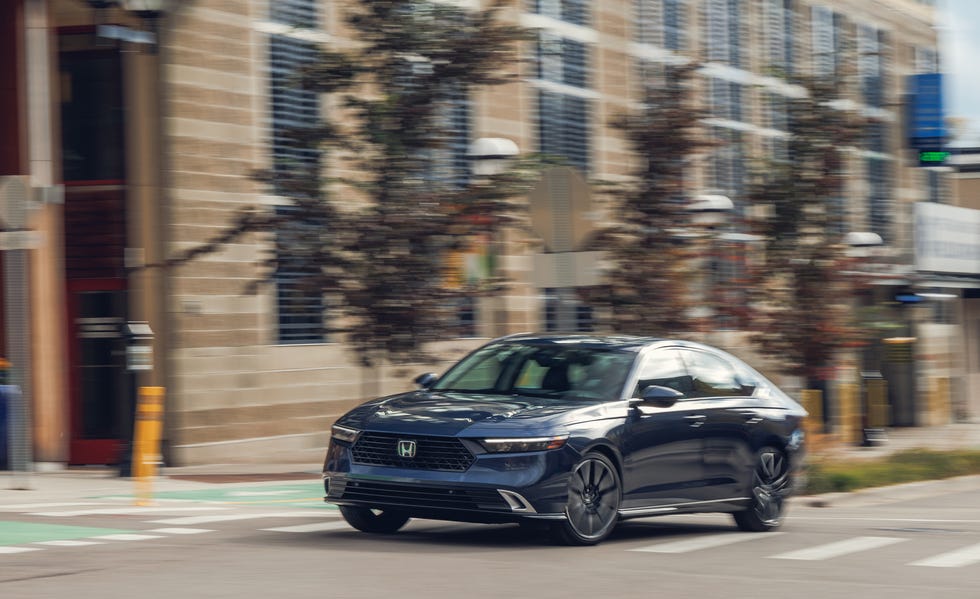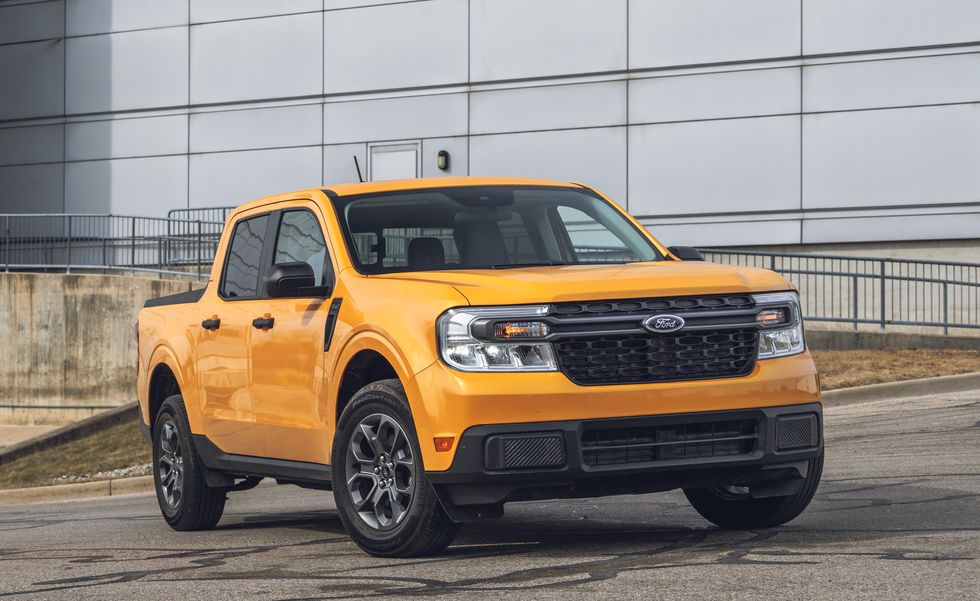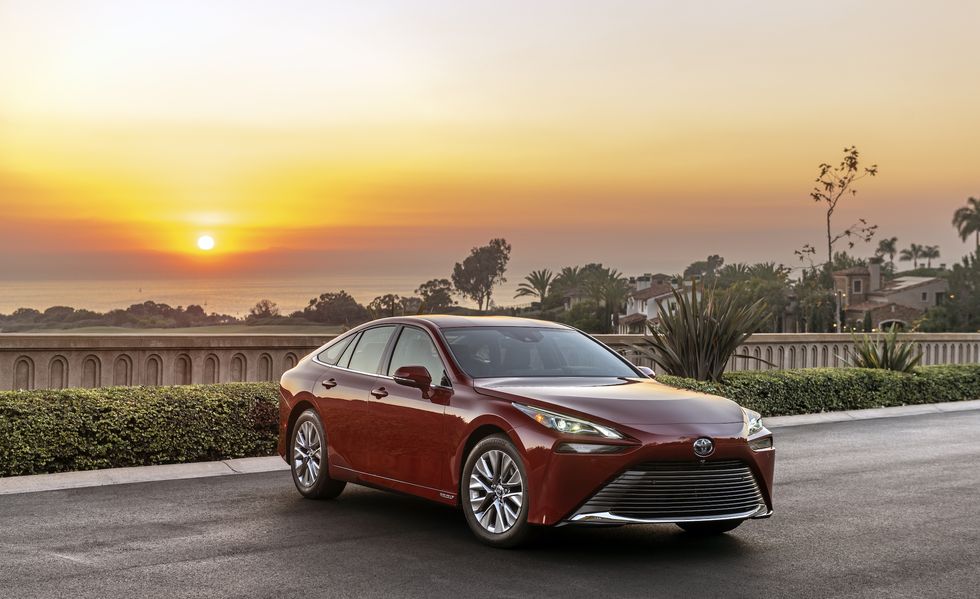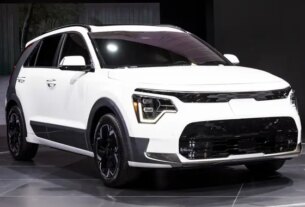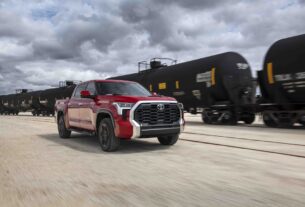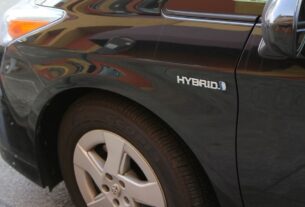What Is a Hybrid?
A hybrid automobile is one that uses both an internal-combustion engine and an electric motor for propulsion, but the only fuel you’ll put in is gasoline. (Diesel hybrids do exist, but they’re mainly found in locomotives and other extreme heavy-duty applications.) Hybrids have small high-voltage batteries to power their electric motors, but you don’t plug them in.
With no external power source, electricity for the motor is scavenged under braking in a process called regenerative braking—regen for short. If you’re an F1 racing fan, you may have heard it called a Kinetic Energy Recovery System (KERS). The regen system does not replace the traditional brakes but instead works as a crucial alternative. Electrical energy collected via this process is saved in the battery for immediate reuse the next time you accelerate. When you leave a stoplight, the saved energy gets the car going again and delays the restart of the gasoline engine—in some cases until you reach 25 mph. When you stop again, the cycle repeats. This makes a hybrid’s city fuel economy much higher than a nonhybrid’s, not to mention its own highway economy.
You are watching: What Is a Hybrid Car and How Do They Work?
How Does Regenerative Braking Work?
Regen is a natural outgrowth of how electric motors function. When you put electricity into an electric motor, it moves (or helps move) the car. Once the car is moving, the same motor becomes a generator that can reverse the flow of electrons and harvest that motion to put electricity back into the battery. This is why hybrid electric motors are sometimes referred to as motor-generators. Crucially, this process slows the car, so regen is triggered and managed by a computer when you press the brake or descend a grade.
See more : What is a Hybrid Car Tax Credit?
One-pedal driving, a process by which lifting the throttle can trigger regen, is mainly present on full EVs, not hybrids, because EVs have higher-capacity electrical systems and much larger batteries. How small is a hybrid’s battery? They are usually no larger than one kilowatt-hour (kWh), which is just 1 to 2 percent the size of a full electric vehicle’s battery.
Still, hybrid regen can be strong enough for most routine slowing. A computer always monitors how hard you press the brake pedal, so it will blend in the traditional brakes—the pads and rotors—during harder stops and in emergency situations. This regen-first approach maximizes the collection of electricity for propulsion so that fuel economy soars. Regen is a basic element that all hybrids share, but differences arise when it comes to the usage of their gasoline engines.
Parallel Hybrids
This is the most common type, as they are set up to use the selectively use the gasoline engine or the electric motor to drive the car. They can also engage both at once. The electric motor gets the nod at lower speeds because that’s when their high initial torque and efficiency can make best use of the limited battery energy. After a delayed restart, the gasoline engine joins in and eventually takes over as speed climbs and settles into a cruise, at which point the engine is in its sweet spot. Some designs employ a single motor sandwiched between the engine and a conventional transmission, while others use an arrangement of two electric motors that work together to act as a continuously variable transmission for the engine. Examples of the former include early Honda hybrids as well as current Hyundai and Kia offerings such as the Elantra. The latter describes Toyota, Lexus, and Ford hybrids such as the Maverick.
Series Hybrids
This type is less common, but popularity is increasing. These also use a primary drive motor that propels the vehicle using regen-collected battery energy at low speeds and scavenges energy when slowing. Once speeds climb and that energy runs low, the engine switches on to drive a second dedicated generator that turns gasoline power into electricity to keep the battery fed. This means their wheels are electrically driven at all speeds, so power delivery always feels smooth and seamless. The downside is that converting gasoline into electricity represents an extra step that reduces efficiency, but newer approaches makes this less significant. Honda is the most recent champion of this type, which powers the latest iterations of the Civic, CR-V, and Accord hybrids.
Blurred Lines
Like anything else, hybrid systems do not follow such definitions to the letter. Toyota’s Hybrid Synergy Drive is primarily a parallel system, but its dual-motor design also allows brief moments of series power generation when the engine’s most efficient operating speed generates more power than the driver needs. Likewise, Honda’s latest primarily series hybrid system can clutch the engine in to drive the wheels directly in specific conditions when the computer decides that’s more efficient. Both exceptions are good things, because they show that engineers are pursuing the most efficient solution, not one that’s simplest to explain.
How Hybrids Benefit You
See more : More people are trading in their electric and hybrid cars for SUVs, report claims
The main benefit of any hybrid is to capture and reuse braking energy that would otherwise be lost as heat and wear in the brakes. The ones that interest most people use this recovered energy to save fuel and increase MPG using an electric motor to delay the start of the gas engine, but sports-minded hybrids deploy the harvested energy to boost overall power and speed.
Fuel-saving hybrids are an excellent choice for those who want to save money or reduce their carbon footprint. After all, high MPG and low carbon emissions are two sides of the same coin. If you live in an apartment or will only have one car, an EV may be impractical. A hybrid, on the other hand, is a purely gasoline-fueled vehicle that does not have a leash or special fueling requirements.
In more practical terms, a hybrid’s strong focus on regenerative braking means that their brake pads and rotors will last much longer than those of normal cars. They also don’t have a separate starter motor because the electric motor handles that. And a hybrid’s small battery doesn’t take up much space or require an expensive battery chemistry.
Other Types of Hybrids
Mild hybrids, sometimes called belt-alternator-starter or BAS hybrids, have modest 48-volt batteries that can’t produce any meaningful propulsion. Such systems are, however, topped up by regeneration, and they combine the starter and alternator into one unit that can seamlessly start the engine “in gear”, so to speak, to smooth the operation of their start-stop systems.
Fuel-cell hybrids are series hybrids, complete with an electric motor, regenerative braking, and a small high-voltage battery. But they don’t have a gasoline engine. Instead, they have a fuel cell, a device that transforms hydrogen gas into electricity, with water the only byproduct. Fuel-cell hybrids therefore run on electricity all the time and are as quiet as EVs. Their hydrogen tanks can be filled in five minutes like normal cars, but station availability is extremely limited and mostly confined to major California population centers.
Plug-in hybrids are simply regular hybrids with greatly enlarged batteries designed to give them full speed operation on electricity alone for 20 to 50 miles. All the issues with charging an EV battery come to roost here, but they’re not as acute because a plug-in hybrid’s battery is about a quarter the size of an EV’s. That makes them easier to plug in at home, and those that can manage this will have a part-time EV with no leash: a weekday EV commuter, but with full gasoline capability for long trips. And they’re still efficient when running on gasoline because they retain the advantages of regular hybrids. Negatives include higher purchase cost because of the bigger battery, a greater likelihood that the larger battery will intrude on cargo space, and a possibly smaller gas tank.
Dan Edmunds was born into the world of automobiles, but not how you might think. His father was a retired racing driver who opened Autoresearch, a race-car-building shop, where Dan cut his teeth as a metal fabricator. Engineering school followed, then SCCA Showroom Stock racing, and that combination landed him suspension development jobs at two different automakers. His writing career began when he was picked up by Edmunds.com (no relation) to build a testing department.
Source: https://us.congthucvatly.com
Category: Electric & Hybird

